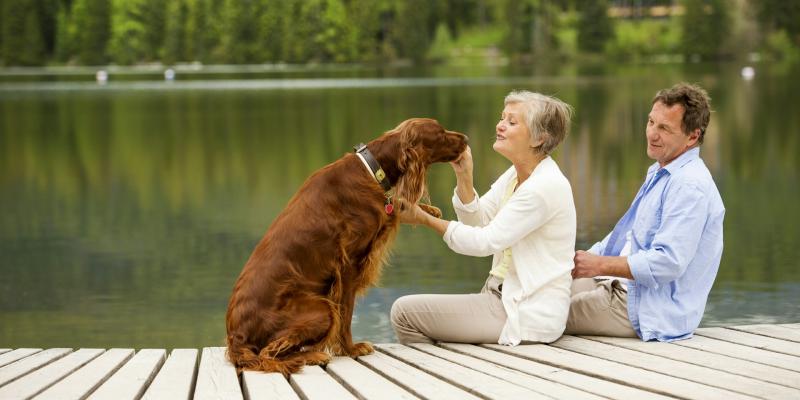License Your Dog

We understand that this is often something that owners overlook. We don’t always think about it because we never expect that our pet can slip away, be at large, and in danger of being hurt, accidents do happen. The City of Winnipeg and many Rural Municipalities require by law that all dogs must have a current dog license attached to their collar. The process of licensing your dog is very simple and easy. Not only is it made convenient for dog owners to purchase a license for their beloved dog, it also saves money for you too.
Fines can be costly and a license will be of great benefit to you and your dog if he/she is lost. Licenses can be purchased at Animal Services Agency at 1057 Logan Ave. Here is the link for Winnipeg to help you with the licensing process. http://www.winnipeg.ca/cms/animal/Licenses/default.stm
Watch Your Pet

As a dog owner, one of the most frightening things that can happen is the disappearance of your beloved dog. Many dogs run off to explore, then are unable to find the way home. They dig their ways out of fenced yards, slip out of leashes, or run from the car. Tragically, other dogs are stolen – especially purebreds. There is a black market for dogs, and thieves will often steal valuable purebreds to sell. Learn how to protect your dog from becoming lost or stolen and take steps that will help increase the likelihood of your dog’s safe return if the worst happens.
Being responsible for your dog means protecting her, supervising her and knowing where she is at all times. Avoid leaving your dog alone in the yard for any period of time. Dogs crave companionship and become easily bored if left alone. They may find a weak spot in the fence, jump or climb the fence, or dig out from under the fence. Additionally, a dog left alone can easily be stolen. The dog relies on you to protect it! It is YOUR responsibility to do everything in your power to do so!
Secure your fence and supervise your dog. Do not let your dog run off leash in an unfenced area. Be careful when opening doors so your dog does not run out. Avoid leaving your dog in the car or tethered outside a place of business while you run in “just for a minute.” A minute might be all it takes. Finally, make sure leashes and collars are secure.
Microchip Your Pet

We learned that after a disaster like a nasty storm, fire or car accident, how easily lost pets can lose their collars and ID tags. A microchip implanted under the pet’s skin is the only sure way to have permanent ID and to verify ownership. If you found a dog, you can bring it to the nearest vet and they will scan for a chip free of charge.
A microchip is a small electronic chip with a unique ID number in a capsule about the size of a grain of rice. Once implanted, the chip can be read by a handheld scanner, and the microchip company is notified of the ID number. You need to register your contact information with the microchip company so they can use the ID number to reach you.
A microchip will only reunite you with your pet if the company knows how to reach you.
Even if your pet never leaves the house, we recommend a microchip. A flood, tornado, or even a surprise bolt out the door can separate you.
Keep the Collar On

Your dog should wear a collar at all times, and that collar should always have current identification, including a current phone number. Some people say that a collar is unsafe for the dog and could get caught on something and choke. This is another reason why you never leave your dog unattended. You will get your dog home faster if you have your contact number on the tag.
An idea is to take your Vet tag and a nail and scratch your phone number on the back of it. Or get a separate tag and have your dog’s name on it and your phone number. If you notice the two tags are making too much noise, just wrap some clear tap around them.
Unfortunately, too many dogs are picked up by animal control that have no ID. Some of these dogs are never found by their owners. Take the time to find the best collar and ID tag for your dog and keep them on her, just in case. If your dog is found, the ID will help her to be safely returned. Also, make sure to collar fits well so it will not slip off.
If your dog is at a sitter’s while you are out of town, make sure the dog has a tag on with the sitter’s phone number. If the dog gets lost while you are away, this will help with a fast return to the sitters. You can purchase these tags at most pet stores. They are cheap, stylish and they will engrave the info for you as well.
Leash Your Pet

Sometimes it can be tempting to let your dog run off-leash. Maybe you are going from the house to the car and just know your dog will follow you. Perhaps you are at an empty park and think your dog will stay. The truth is that every time your dog is off-leash in an unfenced area you are taking a risk.
Even many well-trained dogs can run off. A small animal can evoke the predatory instinct or a loud noise can scare a dog into running away.
If your dog gets out of your sight, she might not find her way home. A wandering dog may be injured or even stolen. Using a leash is your best bet at keeping your dog in sight.
Moved, Adopted or Fostering a New Dog?

Keep your dog on a leash and well supervised for the first month at your/its new home.
You might want to invest in a Martingale collar. As a matter of fact, we recommend it. They are safe for the dog and they have a less chance of slipping out of them.
Check the yard for any holes or spaces that the dog can use to escape. Make sure that the dog can not jump the fence.
Most importantly, take your dog for regular walks so the dog can become familiar with its new surroundings.
Keep Pet Records Up to Date

Include a current photo of you with your pet. This will help to verify ownership and to be able to post ads on WLDA or Kijiji. Take different side shots of your dog. This will also show some of your pet’s unique identifying characteristics (markings, scars, etc.). Store your pet’s vet, food and medication records in one place.
Include information like the pet’s daily routine, words the pet knows, and other tips that would be useful to someone taking care of your pet in an emergency situation. Make sure a designated family member, friend or neighbor knows where your pet’s information is stored, in case something happens to you. You might want to take a copy of this and send it to the sitters as well.
